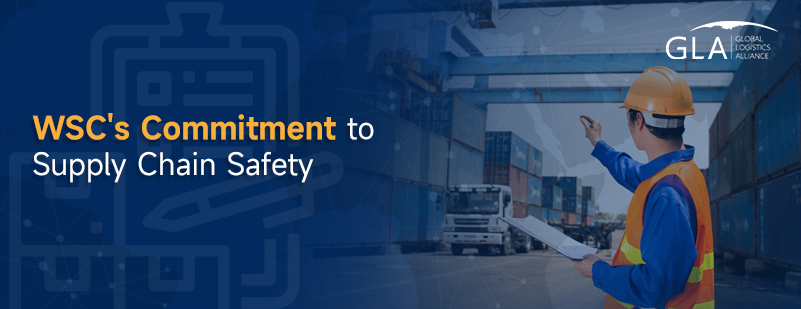Welcome to GLA! Leading the global logistics alliance.


Your location:Home > News > Addressing the Hazardous Cargo Dilemma: WSC's Commitment to Supply Chain Safety
Time:2023-12-05 Publisher:Kevin Num:2298

In the intricate web of global trade, ensuring cargo safety stands as an unequivocal imperative. However, a persistent issue continues to loom ominously over the supply chain - the improper declaration and labeling of dangerous goods. This problem poses severe and far-reaching risks to lives, the environment, and the overall integrity of the global supply network. In this article, we delve into the alarming concerns surrounding this issue and shed light on the World Shipping Council's (WSC) proactive efforts to safeguard the supply chain.
Despite the collective efforts of industries and governments worldwide, the specter of inaccurately declared or labeled dangerous cargo continues to haunt the supply chain. This ongoing predicament not only jeopardizes the safety of those working within the supply chain but also poses significant environmental risks. Fires and explosions triggered by mislabeled hazardous cargo can lead to catastrophic consequences, inflicting harm and even claiming the lives of vessel crews and transportation staff.
Recognizing the gravity of this situation, the World Shipping Council, representing linear carriers, has risen to the challenge. Their primary mission is to elevate cargo safety standards, thereby safeguarding the lives of supply chain workers, preserving the environment, and fortifying the integrity of the global supply network.
Over the past decade, a disconcerting trend has emerged - a surge in containership fires. These devastating incidents have resulted in casualties and total losses. Shockingly, there have been 64 reported fires on containerships in the last five years, equating to a ship fire occurring approximately every sixty days.
One of the pivotal factors contributing to these alarming fires is hazardous cargo that has not been properly declared, has been misdeclared, or has not been correctly packed by shippers. This negligence in adhering to safety protocols has heightened the risks associated with transporting dangerous goods.
Despite the presence of comprehensive international and national regulations governing the transport of dangerous goods, these items continue to be misdeclared or not declared at all. This regulatory gap makes it challenging to detect and respond to the problem, resulting in ship fires that continue to plague the industry.
In 2022, the maritime industry witnessed an unsettling statistic - fire-related incidents at sea increased by over 17% compared to the previous year. This alarming rise underscores the urgency of addressing the issue of improperly declared dangerous goods.
The World Shipping Council remains at the forefront of efforts to enhance safety measures within the industry. They are diligently working on a comprehensive approach that not only safeguards lives but also protects the marine environment and secures cargoes and vessels.
One of the key strategies in the WSC's arsenal is the development of a shared industry process for cargo screening and inspections. This innovative approach is poised to create a safer working environment for ship crews, individuals involved in inland transport, and port workers. Simultaneously, it promises to make ocean transport more efficient and dependable.
John Butler, President & CEO of the World Shipping Council, underscores the significance of a unified industry approach to cargo safety. He emphasizes that such an approach will not only benefit ship crews and supply chain workers but also the communities they serve by preventing dangerous shipments that disrupt the supply chain.
In conclusion, the issue of improperly declared dangerous goods in the supply chain continues to be a pressing concern, posing significant risks to safety and the environment. However, with the World Shipping Council's unwavering commitment and their comprehensive approach to enhancing safety measures, there is hope on the horizon.
By collectively addressing this challenge, we can fortify the supply chain, protect lives, and ensure the safe and secure transportation of goods across the globe. It is imperative that we prioritize safety in the supply chain to ensure a prosperous and sustainable future for all.
Prev:Welcome! Membership Renewal from Italy ———— AlpentransNext:Welcome! New Golden Member from Indonesia ———— PT. Port Avant Logistics
Recommended Membership
Latest News